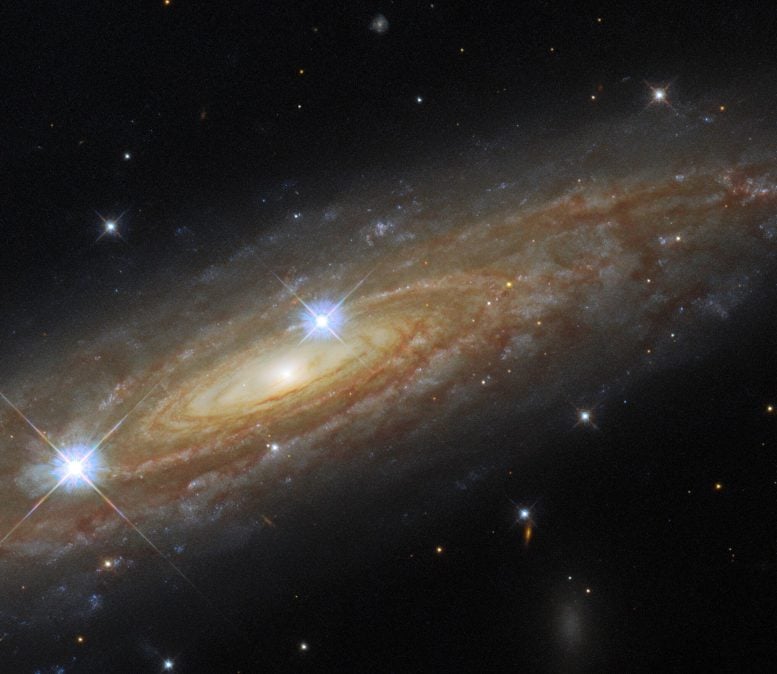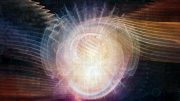
Hubble Space Telescope edge-on view of the majestic spiral galaxy UGC 11537. Credit: ESA/Hubble & NASA, A. Seth
This astronomical portrait from the NASA/ESA Hubble Space Telescope showcases an edge-on view of the majestic spiral galaxy UGC 11537. Hubble’s Wide Field Camera 3 has captured the tightly wound spiral arms swirling around the heart of UGC 11537 at infrared and visible wavelengths, showing both the bright bands of stars and the dark clouds of dust threading throughout the galaxy.
UGC 11537 is 230 million light-years away in the constellation Aquila, and lies close to the plane of the Milky Way. Being so close to the starry band of the Milky Way means that foreground stars from our own galaxy have crept into the image — the two prominent stars in front of UGC 11537 are interlopers from within the Milky Way. These bright foreground stars are surrounded by diffraction spikes — imaging artifacts caused by starlight interacting with Hubble’s inner structure.
This image came from a set of observations designed to help astronomers weigh supermassive black holes in distant galaxies. The combination of Hubble’s sharp-eyed observations and data from ground-based telescopes allowed astronomers to make detailed models of the mass of stars in these galaxies, which in turn helps constrain the mass of supermassive black holes.









its a pity that the interlopers stars are not named
so us poor photograph observers have to guess which of all the stars in the universe these are
but should we be able to narrow them down to a probable few
this would be my best guess for two diffraction spiked interloper foreground stars
1 altair the flying eagle blue subdwarf star 0.77 mag 16.8 light year distance
19 50 46.99855 08 52 05.9563
2 tarazed beam of the scale orange giant star 2.72 mag 461 light years distance
19 46 15.58029 10 36 47 7408
7 alshain the falcon yellow white subgiant star 3.71 mag 44.7 light years distance
19 55 18.79256 06 24 24.34.3425
but i could be totally wrong
and hence no geometer would be able to give you an accurate measurement of the ugc 11537 galaxy
but if the image size is right
is that distance from the left side of the picture to the other right side would it be 900,000 light years long
but if only i knew the foreground stars names
maybe it could have been calibrated to a much finer detail
interlopes do help u sometimes
interlopers and more accurate readings
is that distance from the left side of the picture to the other right side would it be 900,000 light years long that should read 70,000 light years across approx
its a better eagle eye view
so between the two interloper stars approx 25,000 light years across
Looks bright 🌞 ✨, all around they move? Someone will name them. 1 n 2.
What does it mean an “astronomical portrait “?A made up image?It’s hard to believe the Hubble is taking those clear photos flying out in space at an incredible speed and sending them back to earth millions of miles away via wireless!
I like this article, very new amateur astronomer. I am wondering what the green like star or object is at the top middle of the image is or the mist looking like thing at the bottom right is? I wonder if they can go back to that same area of space and focus on those objects and see what they look look like up closer? Just wondering, that’s me.
GLOBE TROTTER… So obviously it’s not a direct photo from hubble. It’s actually several infrared photos taken over long periods of time along with the help from telescopes on earth using different light spectrums to peer through its magical clouds. Then it’s all combined and fed into a super computer and it spits out this cool picture.